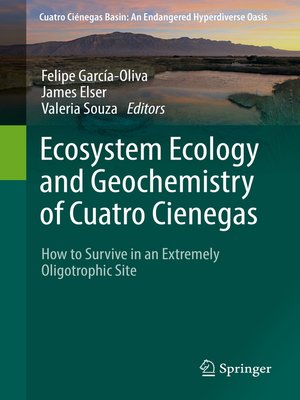Ecosystem Ecology and Geochemistry of Cuatro Cienegas
ebook ∣ How to Survive in an Extremely Oligotrophic Site · Cuatro Ciénegas Basin: an Endangered Hyperdiverse Oasis
By Felipe García-Oliva

Sign up to save your library
With an OverDrive account, you can save your favorite libraries for at-a-glance information about availability. Find out more about OverDrive accounts.
Find this title in Libby, the library reading app by OverDrive.



Search for a digital library with this title
Title found at these libraries:
| Library Name | Distance |
|---|---|
| Loading... |
Carbon (C), Nitrogen (N) and Phosphorus (P) are three of the most important elements used to build living beings, and their uptake from the environment is consequently essential for all organisms. Photosynthesis is the process in which plants absorb atmospheric C as they grow and convert it to biomass. However, plants acquire N and P only when these are available in the soil solution, which makes these elements the most limiting nutrients in plant growth and productivity in most ecosystems. When plant residues and roots decompose, the C, N and P they contain is transformed primarily into soil organic matter (SOM) or C and N can release to the atmosphere. Recent interest on the global C, N and P cycles has focused attention on the different proportion of terrestrial C, N and P stored in different ecosystem pools. Cuatro Cienegas represents an exceptional place, since the plants are not the base of the food web, they are the microbial community, that recycle the elements essential for life. In this book we describe how this is an analog of early Earth.







